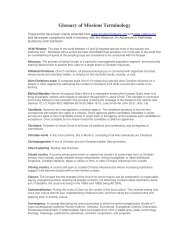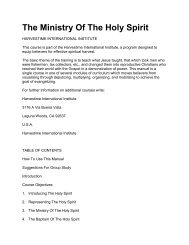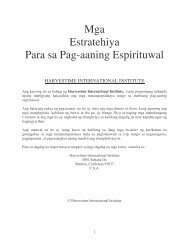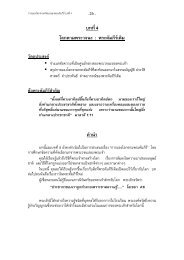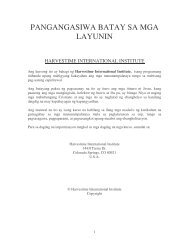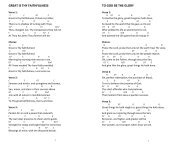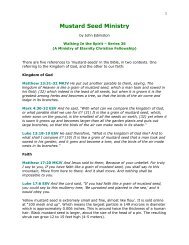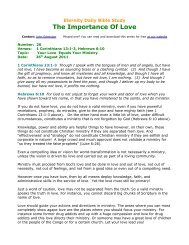Hobbes - Leviathan.pdf
Hobbes - Leviathan.pdf
Hobbes - Leviathan.pdf
Create successful ePaper yourself
Turn your PDF publications into a flip-book with our unique Google optimized e-Paper software.
signifieth to see. They are also called phantasms, which is in the<br />
same language, apparitions. And from these images it is that one of<br />
the faculties of man's nature is called the imagination. And from<br />
hence it is manifest that there neither is, nor can be, any image made<br />
of a thing invisible.<br />
It is also evident that there can be no image of a thing infinite:<br />
for all the images and phantasms that are made by the impression of<br />
things visible are figured. But figure is quantity every way<br />
determined, and therefore there can be no image of God, nor of the<br />
soul of man, nor of spirits; but only of bodies visible, that is,<br />
bodies that have light in themselves, or are by such enlightened.<br />
And whereas a man can fancy shapes he never saw, making up a<br />
figure out of the parts of diverse creatures, as the poets make<br />
their centaurs, chimeras, and other monsters never seen: so can he<br />
also give matter to those shapes, and make them in wood, clay, or<br />
metal. And these are also called images, not for the resemblance of<br />
any corporeal thing, but for the resemblance of some fantastical<br />
inhabitants of the brain of the maker. But in these idols, as they are<br />
originally in the brain, and as they are painted, carved, moulded,<br />
or molten in matter, there is a similitude of the one to the other,<br />
for which the material body made by art may be said to be the image of<br />
the fantastical idol made by nature.<br />
But in a larger use of the word image is contained also any<br />
representation of one thing by another. So an earthly sovereign may be<br />
called the image of God, and an inferior magistrate the image of an<br />
earthly sovereign. And many times in the idolatry of the Gentiles<br />
there was little regard to the similitude of their material idol to<br />
the idol in their fancy, and yet it was called the image of it. For<br />
a stone unhewn has been set up for Neptune, and diverse other shapes<br />
far different from the shapes they conceived of their gods. And at<br />
this day we see many images of the Virgin Mary, and other saints,<br />
unlike one another, and without correspondence to any one man's fancy;<br />
and yet serve well enough for the purpose they were erected for, which<br />
was no more but by the names only to represent the persons mentioned<br />
in the history; to which every man applieth a mental image of his<br />
own making, or none at all. And thus an image, in the largest sense,<br />
is either the resemblance or the representation of some thing visible;<br />
or both together, as it happeneth for the most part.<br />
But the name of idol is extended yet further in Scripture, to<br />
signify also the sun, or a star, or any other creature, visible or<br />
invisible, when they are worshipped for gods.<br />
Having shown what is worship, and what an image, I will now put them<br />
together, and examine what that idolatry is which is forbidden in<br />
the second Commandment, and other places of the Scripture.<br />
To worship an image is voluntarily to do those external acts which<br />
are signs of honouring either the matter of the image (which is<br />
wood, stone, metal, or some other visible creature), or the phantasm<br />
of the brain for the resemblance or representation whereof the<br />
matter was formed and figured, or both together as one animate body<br />
composed of the matter and the phantasm, as of a body and soul.<br />
To be uncovered, before a man of power and authority, or before<br />
the throne of a prince, or in such other places as he ordaineth to<br />
that purpose in his absence, is to worship that man or prince with<br />
civil worship; as being a sign, not of honouring the stool or place,<br />
but the person, and is not idolatry. But if he that doth it should<br />
suppose the soul of the prince to be in the stool, or should present a<br />
petition to the stool, it were divine worship, and idolatry.



